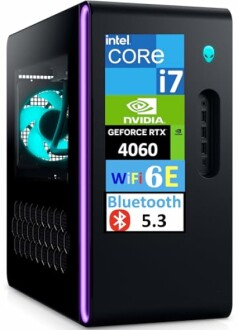
Upgrading Your Graphics Card: A Gamer's Guide
Key Takeaways
- Understand the specifications of your current setup.
- Choose a GPU that fits your gaming and performance needs.
- Ensure compatibility with your motherboard and power supply.
- Learn the installation process for a smooth upgrade.
- Consider future-proofing your system with higher-end components.
As a gamer, the performance of your gaming desktop heavily relies on the power of your graphics card (GPU). Upgrading your GPU can lead to stunning visuals and smoother gameplay. In this guide, we'll help you navigate through the essentials of selecting and upgrading your graphics card for optimal gaming performance.
Understanding Your Current Setup
Before diving into the world of graphics cards, it’s crucial to understand your current system. Here are the specifications to check:
| Component | Details |
|---|---|
| Motherboard Model | [Your Motherboard Name] |
| Power Supply Unit (PSU) | [Your PSU Wattage] |
| Current Graphics Card | [Your Current GPU] |
| Operating System | [Your OS] |
Make sure to note down these specifications as you will need them when selecting a new GPU. Understanding your current setup helps ensure that you pick a graphics card that complements your gaming needs.
Choosing a New Graphics Card
When selecting a new graphics card, there are several factors to consider:
- Performance: Evaluate the performance benchmarks relative to the games you want to play. Look for cards that provide high frame rates and support for modern gaming technologies.
- Compatibility: Ensure that the GPU is compatible with your motherboard and that your PSU can support the card’s power requirements.
- Cooling Solutions: Look for graphics cards that come with efficient cooling solutions, especially if you plan on overclocking.
- Budget: Set a budget and find the best card that offers a good balance of performance and value.
Performance Requirements
Dive deeper into the essential performance metrics:
| Graphics Card | VRAM | Core Clock | Gaming Performance |
|---|---|---|---|
| RTX 4060 Ti | 8 GB GDDR6 | Up to 2.8 GHz | Excellent for 1080p and 1440p gaming |
| RTX 3070 | 8 GB GDDR6 | Up to 1.73 GHz | Good for 1440p gaming |
| GTX 1660 Super | 6 GB GDDR6 | Up to 1.78 GHz | Good for 1080p gaming |
Installing Your New GPU
Once you’ve chosen your new graphics card, it’s time for installation. Follow these steps:
- Power down your computer and unplug all cables.
- Open the case of your computer.
- Remove the existing graphics card, if applicable.
- Insert your new graphics card into the PCIe slot, ensuring it’s seated firmly.
- Connect any necessary power connectors from your PSU to the GPU.
- Close the case, plug everything back in, and power on your computer.
- Install the latest drivers from the GPU manufacturer’s website.
Future-Proofing Your Setup
Investing in a top-performing graphics card can keep your gaming setup relevant for years to come. Here are extra considerations;
- Opt for cards with ray tracing capabilities for enhanced graphics quality.
- Consider GPUs with higher VRAM for better texture handling in demanding games.
- Evaluate additional features, such as support for VR and higher refresh rates.
Conclusion
Upgrading your graphics card is one of the most impactful changes you can make to your gaming rig. By understanding your current setup, choosing the right card, and following proper installation steps, you can ensure a significant boost to your gaming experience. Don’t forget to consider future-proofing for the best long-term performance!
Pros
- Improved gaming performance and visuals.
- Enhanced support for modern gaming technologies.
- Can extend the life of your gaming desktop.
Cons
- Can be expensive depending on the model.
- Installation may require technical knowledge.
- Not all graphics cards fit in every case.
Alienware Aurora R16 Gaming Desktop PC
This powerful gaming desktop features a 20-core Intel i7-14700F processor, a stunning GeForce RTX 4060 Ti graphics card, and 16GB RAM for flawless multi-tasking. Perfect for serious gaming enthusiasts looking for high performance.
Learn MoreFor more information on selecting gaming peripherals, check out our Buying Guides.
Additionally, discover the best gaming setups by visiting our page on Gaming Monitors with TV Functionality.
Explore High Refresh Rate TVs that enhance your gaming experience dramatically.
And don't forget to learn about Trends in Gaming Televisions to stay ahead of the curve.
Finally, dive into our guide on 4K Gaming TVs for stunning visuals.

